If your home has ceilings that are inherently low (such as in a basement), or if your ceilings are of average height but you might want them to look taller, you might have been looking into ways to give the appearance of height.

There are as many different ways to help with this allusion as there are different low-ceiling spaces. Sometimes, the strategies are completely opposite, which can be frustrating. But if you read on, keeping your own space in mind, we think you’ll be able to figure out a few tips that will work for you.
Common ceiling types
Suspended/ dropped ceiling
This is a type of ceiling that hangs from a metal grid below the existing ceiling, sort of like a second layer. It’s most commonly used in office buildings and commercial spaces where they’re meant to conceal plumbing or wires. They’re also often paired with acoustic tiles.
Coffered ceiling
This type of ceiling has a classic and elegant appearance and is often associated with spaces such as libraries or hotels. It can also be installed in homes where it adds a high-end and luxurious feel to the space. A coffered ceiling is made of a grid of inverted panels and molding and is commonly made out of wood.
Tray ceiling
A tray ceiling has layers and is called this way because it actually looks like an upside down tray. In this case the center of the ceiling is higher and drops around the sides which are positioned at a lower level. This adds depth to the room and can also help to make the ceiling appear higher. It also makes spaces look a bit more dramatic and interesting.
Cathedral/ vaulted ceiling
Perhaps the most dramatic type of all, the cathedral ceiling is suited for large spaces but can also be adapted to suit smaller areas as well. They’re high and dramatic and have an inverted V shape with sides that slope down. They’re beautiful, eye-catching and they definitely make a strong impression.
Coved ceiling
A coved ceiling has a sort of dome-like shape. It’s concave and has curved edges instead of straight or sharp angles which creates a smooth transition between the ceiling and the walls. A coved ceiling makes the space appear more inviting and cozy because of its soft lines.
Shed ceiling
This is also known as a single-slope ceiling and it’s easy to understand why. It begins at the high point at one one wall and sloped down towards the opposite wall, creating a slope. It only goes one way so it’s a bit like half of a classic pitched roof in that way.
Beam ceiling
This is perhaps the most traditional type of ceiling. You can recognize it by the exposed beams which draw attention to the ceiling. These beams can be load-bearing or simply decorative, depending on the style and structure of the room.
Plain, conventional ceiling
Of course, we should also mention the conventional ceiling type which is the most common of all in homes and residential spaces in general. It’s cost-effective and versatile and it’s plain and flat. Still, that doesn’t mean it has to look boring. There’s lots of ways in which you can decorate a conventional ceiling to make it look higher or more interesting.
ARCHITECTURAL TIPS TO MAKE THE CEILING LOOK HIGHER.
1. Uncover the ceiling’s architectural skeleton.
Particularly if you’re a fan of industrial style, or if exposed pipes and ductwork make your heart flutter, a “raw” ceiling will not only enhance that look, but it will also probably give you more headroom physically.
2. Use recessed (canned) lighting.
Anything that sticks out from an already low ceiling, such as some ceiling lights, will make the entire ceiling feel lower and, consequently, the room smaller. Those are precious inches lost. Instead, install recessed lights that take up space within the ceiling itself. Or you could forget about ceiling lights and opt for wall lighting instead.
3. Remove crown molding (or keep it very thin).
Proportion is key here. Molding and trim has the appearance of protruding down from the ceiling; when a ceiling is low to begin with, this is not beneficiary. You could also paint the molding the same color as the ceiling, giving the allusion of additional height.
PAINTING TIPS TO MAKE THE CEILING LOOK HIGHER.
4. Paint the ceiling white.
This is often the default choice for ceilings, and for good reason – white in décor lifts and lightens. On a ceiling, this visually raises the height of the ceiling itself. If you don’t want to go with pure white, it’s recommended that you at least choose a color that is lighter than your walls.
5. Paint the ceiling color down onto the walls.
This façade is a great way to change one’s perception of the ceiling boundaries and immediately adds several inches psychologically.
6. Use a high-gloss finish for the ceiling.
The reflection of light and objects themselves will heighten and brighten the entire room. Or, if you’re very dramatic and choose mirror-type glossiness for the ceiling, your entire room will seem to never end, reflecting the entire space on top of itself.
7. Use a matte finish on the ceiling.
Another school of thought is that a matte finish is best for making a ceiling “disappear,” hiding flaws and faults of the ceiling itself while simultaneously putting the emphasis on the room itself.
8. Paint vertical stripes on the walls.
Anything that draws the eye upward, which is what vertical stripes do inherently, will make a ceiling feel taller and an entire space feel bigger. The bigger the contrast between the stripes, the more dramatic this effect will be.
DECORATING TIPS TO MAKE THE CEILING LOOK HIGHER.
9. Choose low furniture.
When the horizontal lines of your seating furniture are lower than average, it tricks the eye into thinking the rest of the room is taller than it actually is. One bonus of this strategy is that it maximizes any great window views as well, because furniture isn’t blocking the glass.
10. Display items vertically.
Whether in a floor-to-ceiling bookcase or as framed items on the wall, choosing to create some sort of visual display with vertical lines will help your room feel taller, as it draws the eye upward.
11. Raise the hanging of window treatments.
When we see curtains, our eyes automatically equate their size and position with the window itself. By hanging your window treatments just below the ceiling (which might be a foot or two higher than where the top of the window is), you draw the eye upward and fool the brain into thinking the window is bigger than it actually is. This is a great way to heighten and brighten.
12. Opt out of window treatments.
Revealing as much of your windows (and, therefore, letting in as much natural light) as possible will ultimately make the entire room feel brighter and bigger…similar to the spacious feeling that vaulted ceilings evoke even when square footage isn’t more. Windows expand the look of any space, so omitting the curtains or drapes all together will increase the feeling of spaciousness.
13. Use mirrors.
Again, as you go about styling your space, you want to incorporate items that are themselves or that reflect light. Mirrors are ideal for increasing not only light but also perceived square footage. Hang them on the wall, or lean them up against the wall for maximum effect.
14. Put emphasis on the lighting
It’s always important to carefully choose the placement, style and height at which you install the light fixtures. In some cases a low-hanging chandelier or pendant lamp can draw attention to the ceiling and make it appear higher. This can work particularly well for staircases but other spaces as well.
15. Extend the fireplace surround all the way up
Another nice trick that you can use when designing and planning a space like the living room for example is to strategically use the fireplace to highlight the height of the room and to draw more attention to the ceiling. That works particularly well when the fireplace surround goes all the way up. It doesn’t need to stand out really. It can match the walls and only add depth to the room.
16. Match the walls, ceiling and furniture
If the ceiling, walls and the furniture attached to them all match and have the same color and look this creates a uniform and seamless transition and as a result the room appears larger and more airy and the ceiling can also feel higher, especially when dealing with a pitched roof for example. It’s a design strategy that can work particularly well with modern and contemporary interiors.
17. Have a double-height area
This goes without saying, but if you have a loft or a multiple-story house, leaving aside a space which can have a double-height ceiling creates a wonderfully open, airy and bright ambiance and impacts the entire home. These spaces are usually dedicated to the social sections like the living room. Space doesn’t need to have a large footprint in order to stand out and adding another layer of windows can open it up even more.{found on blue-ocean-design}.
18. Extend the windows all the way up
Floor-to-ceiling windows are more and more often integrated into a lot of designs, in particular those with a contemporary or modern vibe. They’re easier to install when the ceiling is flat but they can also work with pitched roofs and other shapes as well. They help to make the ceiling look higher and they open up the rooms to the outdoors. {found on rkdarch}.
19. Expose the beams
This ties to the very first idea we mentioned, that of exposing the architectural skeleton of the space. Making the beams more visible helps to draw attention to the ceiling which in a lot of cases is a positive thing. Although this is pretty much the opposite of keeping things simple, it’s a strategy that pays great results.{found on dfletcherarch}.
20. Add clerestory windows
A clerestory window is placed along the top of a wall, at or very near to the roof line. It doesn’t really expose the view but rather helps to bring more natural light into the room. It can also help to make the ceiling stand out more and to make the wall and by extension the ceiling as well appear taller/ higher.
21. Add more windows
The windows do a lot to add light to a room and to make it appear larger, more spacious and more open. There are many different ways to integrate one or more windows on a wall, including the option to create an entire grid of windows that takes over the entire surface. This particular strategy can also include a row of clerestory windows which can be cleverly and seamlessly placed at the very top.{found on mjamesarchitecture}.
22. Install skylights
Skylights are very practical and helpful for bringing more natural light into a space when there’s not enough space on the walls for regular windows or when the ceiling is low. Of course, there are many distinct design strategies that can develop around them and which can focus on various different elements of the décor or emphasize particular aspects of the space.{found desewing}.
Inspiring DIY ceiling projects
Install wood planks on the ceiling
Wood is a beautiful material with a natural warmth that you can’t really replicate. It can be used in lots of different ways in interior design and a particularly interesting option is to have the ceiling or a portion of the ceiling covered in wood planks. You can do this for a small area like the space about the kitchen island or for an entire room. Check out the full tutorial on construction2style if you’re interested in giving this a try.
Create a plywood ceiling
Plywood is an alternative to natural wood in many cases. It’s appreciated for its lightweight and affordable character and its versatility. In the case of this project from woodshopdiaries the plywood was used to lower and flatten the ceiling of this big open space. It helps to simplify the décor and it also makes the whole place feel warm and inviting.
Install a shiplap ceiling
Another beautiful idea is to install shiplap on the ceiling. This would look especially great if you’re going for a breezy, beach house sort of vibe or for a farmhouse-inspired décor. The shiplap ceiling can be painted white and can feature built-in lighting for a clean and airy mood. For a balanced look keep the walls flat and paint them in an interesting color, like this dark blue featured on makingmanzanita.
Try a cool geometric pattern
If you want to create a focal point or to draw attention to a certain section of your ceiling, perhaps it would be worth experimenting with some interesting geometric patterns. A cool example in this sense can be found on queenbeeofhoneydos. This chevron plank ceiling stands out and was also quite cheap to make thanks to plywood planks which are perfect for a project like this.
Consider a herringbone ceiling pattern
You’re probably familiar with herringbone floors. Well, this is almost the same thing but for the ceiling instead. Because of that the effect that a herringbone ceiling has can be one of surprise. This is actually a great way to add warmth to a room without relying on wooden floors. For once, it’s time for the ceiling to stand out. Head over to frugalfamilytimes for a tutorial on how to design and install such a ceiling.
Install faux beams
It doesn’t really matter if your ceiling doesn’t need support beams. You can still enjoy this style. Installing faux wooden beams can give a room a more cozy look and can be a perfect excuse to use more wood in the design without relying only on furniture and other usual elements. Check out notinggrace to learn how to install faux beams yourself.
Make your own coffered ceiling
When it comes to any of the less conventional ceiling types it’s usually best to leave up to the professionals but that doesn’t mean it’s impossible to do any of this yourself. Installing a coffered ceiling is something that you can pull off by yourself. To make it easier you can simplify a bit the design or go for a more shallow grid in order to preserve the height of the space. You can find more tips and useful info about this on remodelandolacasa.
Use reclaimed wood
As you may have noticed, a lot of these DIY ceiling projects involve wood. With that in mind, it might be a good idea to use reclaimed wood if you want to give your design more character, to make it more authentic or if you’re going for a particular style like retro, farmhouse or rustic. Head over to domesticimperfection for more details about reclaimed wood ceilings and how to make them.
The post 35 Ways to Make a Ceiling Look Higher appeared first on Home Decorating Trends - Homedit.



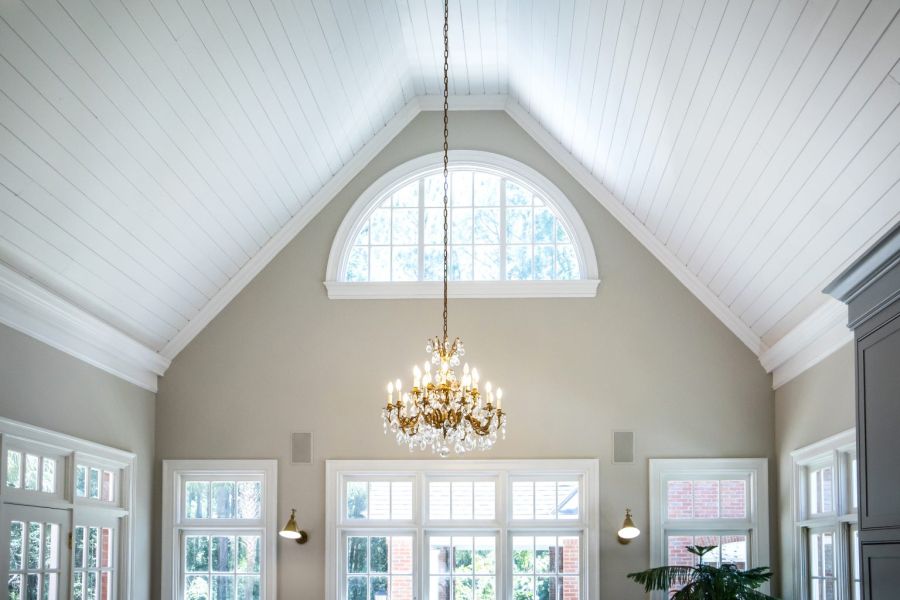







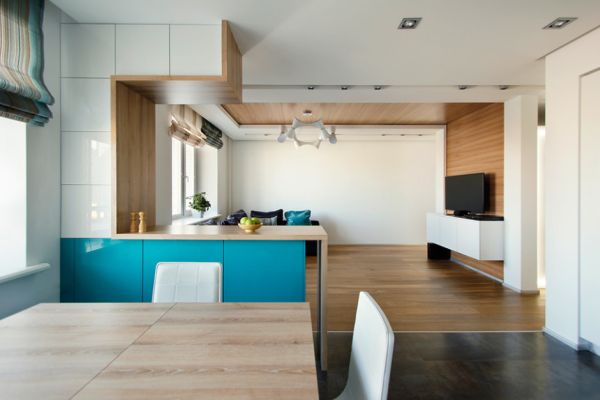
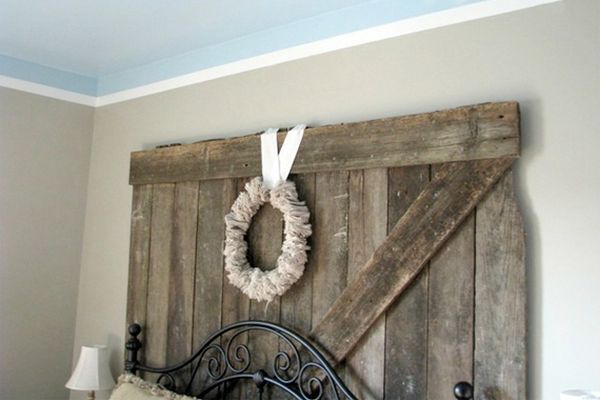


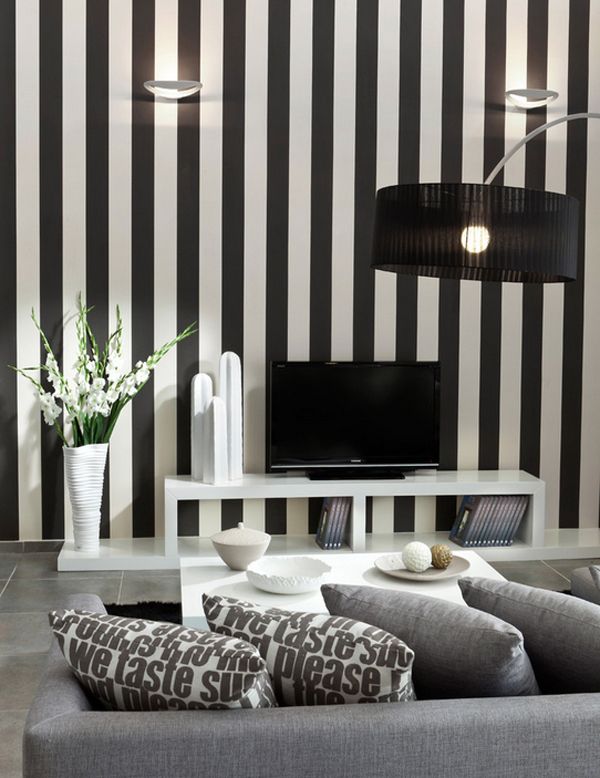
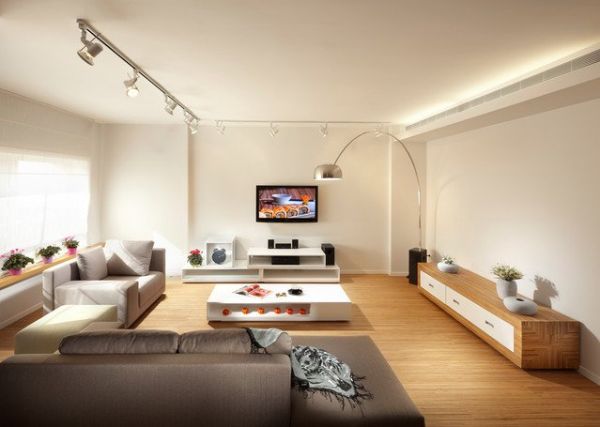
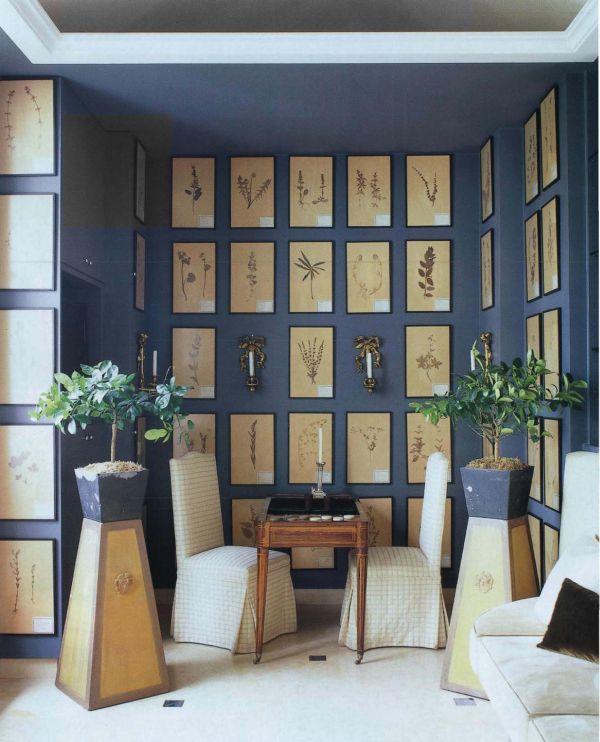




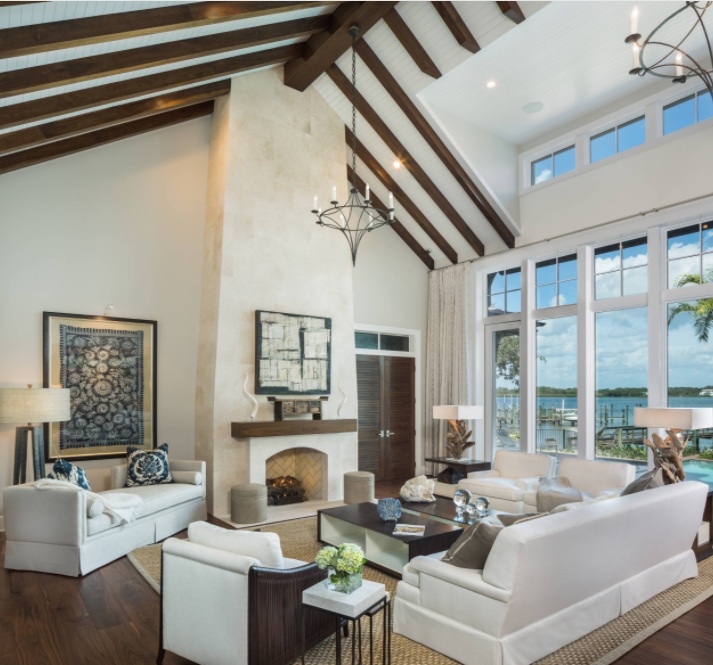















0 Commentaires